Colorado Acorn Woodpeckers
Watching Acorn Woodpeckers in Southwestern Colorado
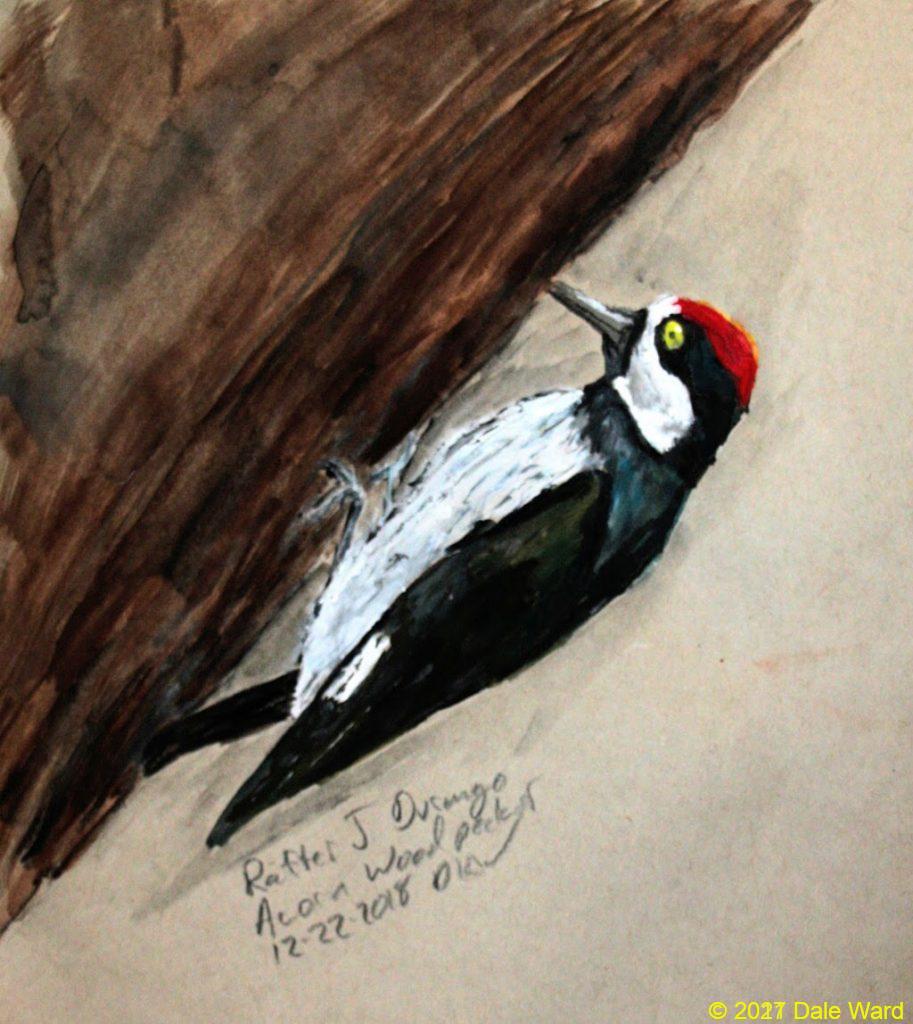 Male Acorn Woodpecker, gouache and watercolor. I love the eyes on these birds. They are big, round, button-looking eyes, like a doll’s.
Male Acorn Woodpecker, gouache and watercolor. I love the eyes on these birds. They are big, round, button-looking eyes, like a doll’s.
I heard there was a colony of Acorn Woodpeckers living in Durango, Colorado. That seemed strange to me. I usually associate them with California, south-central Arizona and New Mexico…not Colorado.
So…I found some directions on the web a couple-few days ago, and off I went.
When I got to the locale, I saw a couple of large Ponderosa Pine snags. The largest was perhaps 100’ tall. Hmm. Was this the place? I glassed the larger snag, and saw that it was covered with holes, like Swiss cheese. As I kept looking, I saw a flash of white on the tree trunk.
It was an Acorn Woodpecker! Well, that was easy.
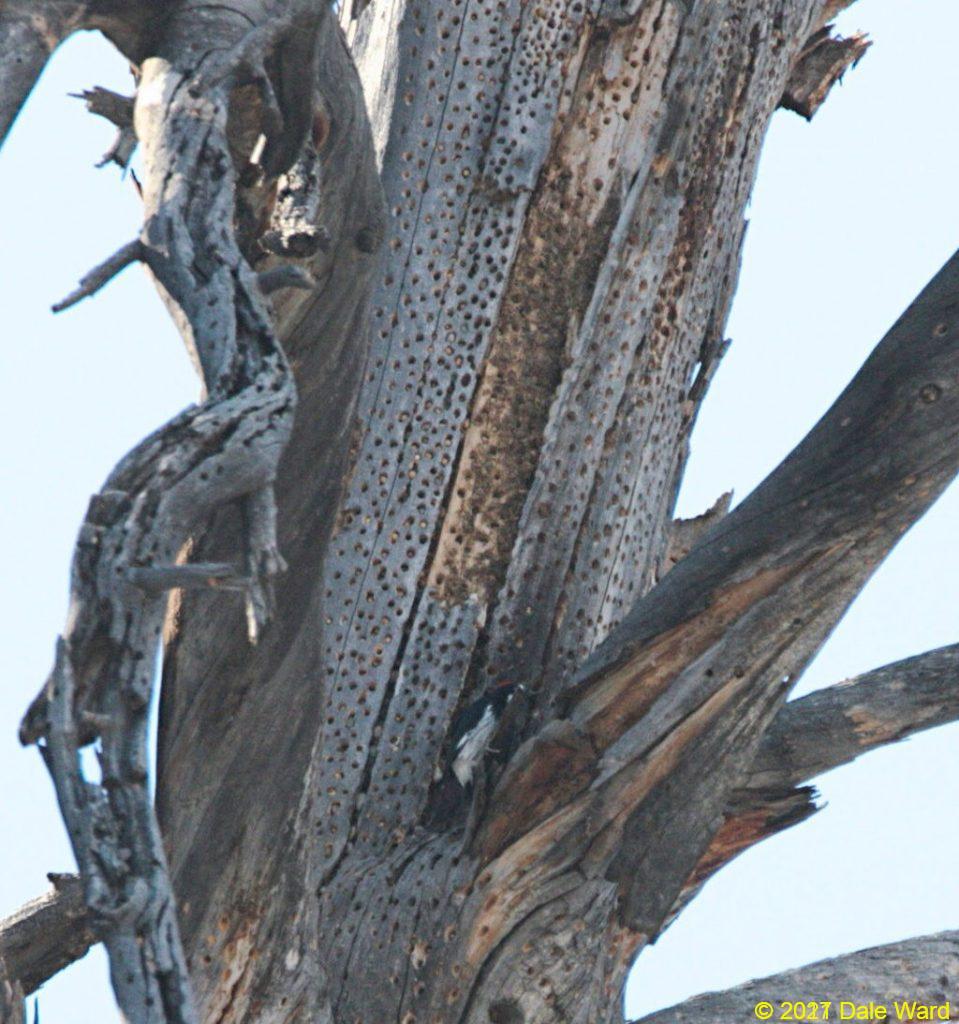 Trunk of Ponderosa Pine snag, illustrating the density of the Woodpecker holes. You can barely see a Woodpecker, in the lower center of the photo.
Trunk of Ponderosa Pine snag, illustrating the density of the Woodpecker holes. You can barely see a Woodpecker, in the lower center of the photo.
The Woodpeckers drill holes in (trees, telephone poles, buildings…), then they go out and collect acorns. They use the holes as storage for the acorns. The birds stuff the acorn into a hole that is just the right size for the acorn. As the acorn dries and shrinks over time, the Woodpeckers move the acorn to a new hole that is just snug enough, and so in.
Eventually, they eat the acorn. I’m not sure if they eat it when the acorn is just the perfect age, or if they eat it when they can’t find other food (winter, say, or if no mast years for a while), or what. About half of their diet is comprised of acorns.
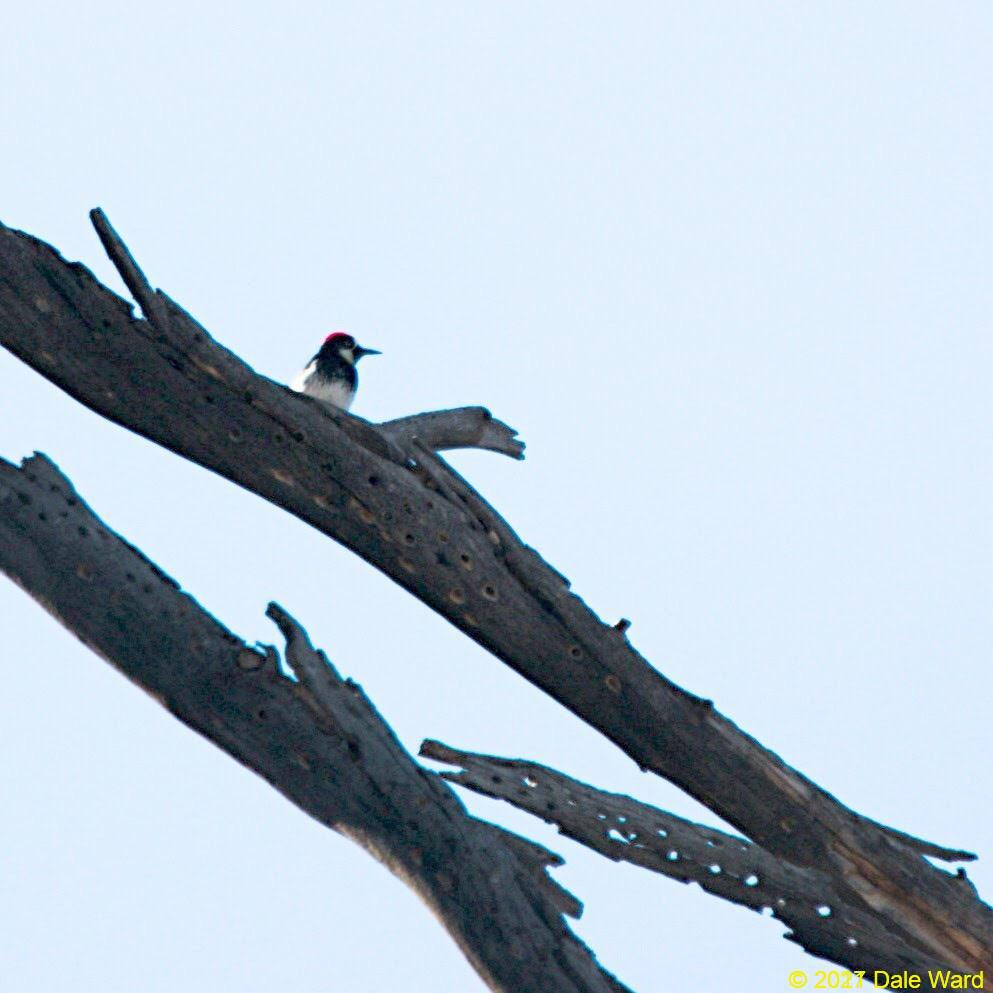 Acorn Woodpecker on branch of Ponderosa Pine snag. The birds leave the tree looking like swiss cheese, there are so many holes.
Acorn Woodpecker on branch of Ponderosa Pine snag. The birds leave the tree looking like swiss cheese, there are so many holes.
They are social birds - groups of Woodpeckers will defend their trees from other Woodpeckers, and the group will communally raise young
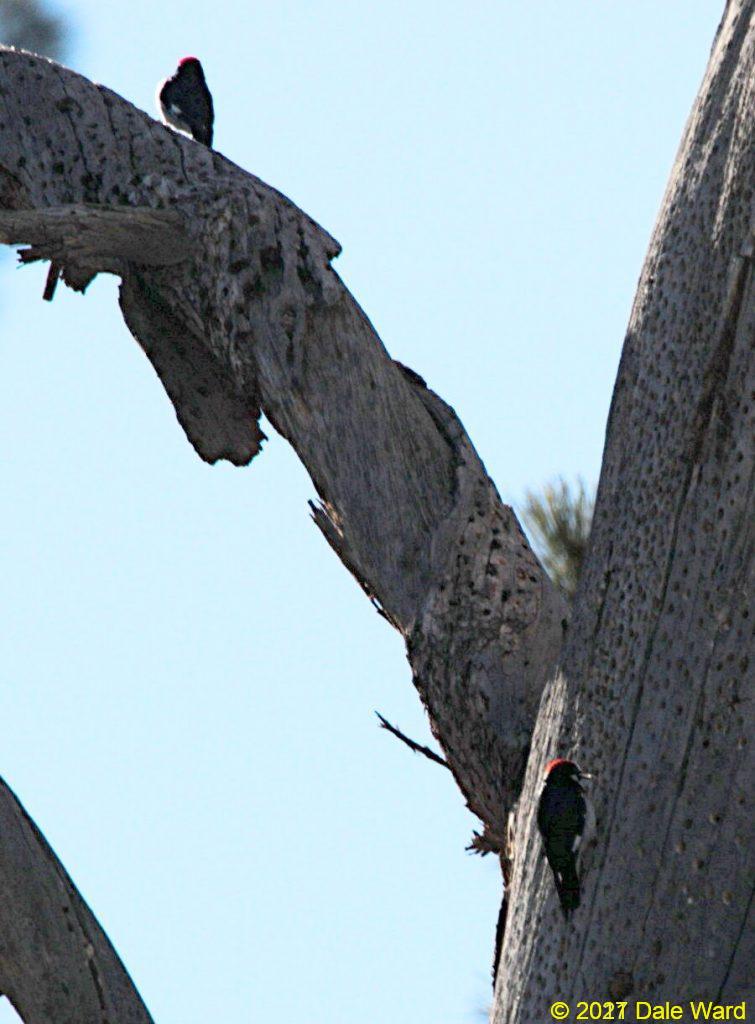 Two Acorn Woodpeckers in Ponderosa Pine snag. The kne on the lower right has an acorn in its bill, I’m not sure if the bird is putting the acorn into a hole or taking it out.
Two Acorn Woodpeckers in Ponderosa Pine snag. The kne on the lower right has an acorn in its bill, I’m not sure if the bird is putting the acorn into a hole or taking it out.
Turns out that this location is one of two known breeding locations for Acorn Woodpeckers in Colorado. The other location was SE of Trinidad, Colorado, and I don’t think that Trinidad colony is extant any longer.
This Durango location has been active since about 1992, and has fledged young for at least some of those years (fledging birds seen at local feeders). I spoke with one of the folks that lived nearby, and he said that the telephone poles in the neighborhood are also full of acorn holes. I didn’t think to look at that, bet it was pretty neat.
I wonder how much longer these birds will live here…these snags aren’t going to last forever. I wonder if the birds will make do with smaller trees, as they do in Arizona.
And why are they here in the first place? Why, since they can live in this area, aren’t they more widespread? Is it just a question of bird-culture, are they a relictual population, or is there something special about this location?
Dunno. But it was great fun to see them.
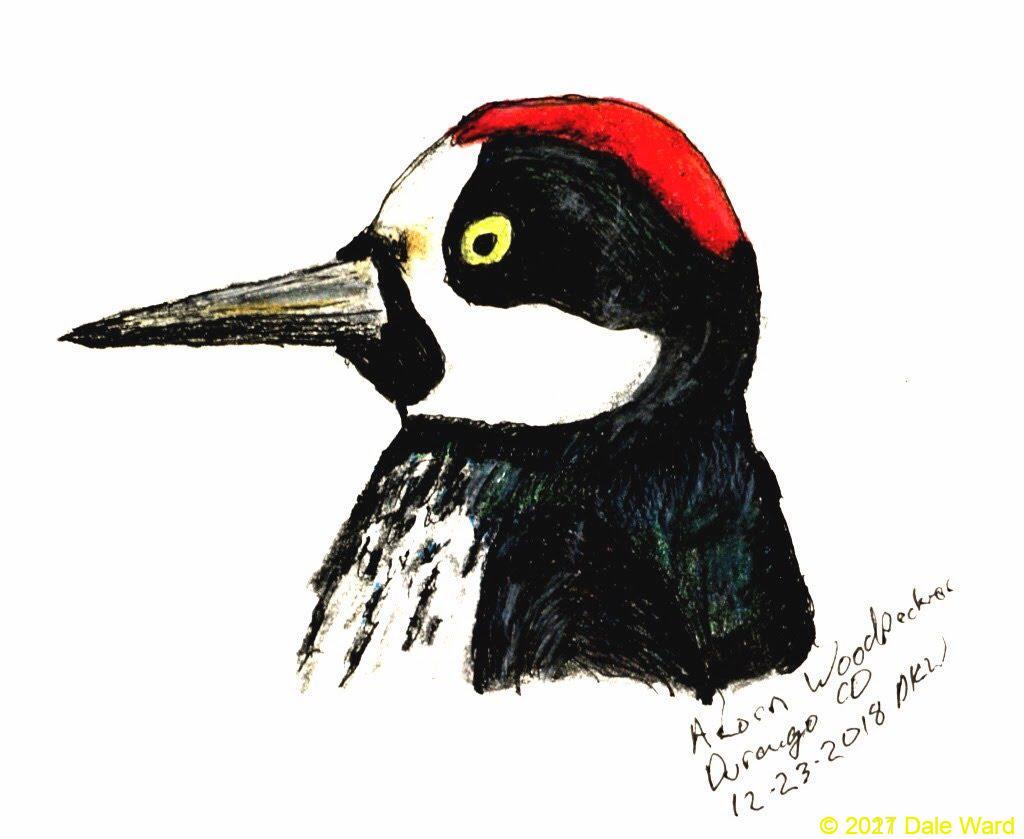 Male Acorn woodpecker head, color pencil and ink pen.
Male Acorn woodpecker head, color pencil and ink pen.
Locality and historical information from The Colorado Breeding Bird Atlas (1998, Hugh E. Kingery ed.) and The Colorado Birding Trail website.